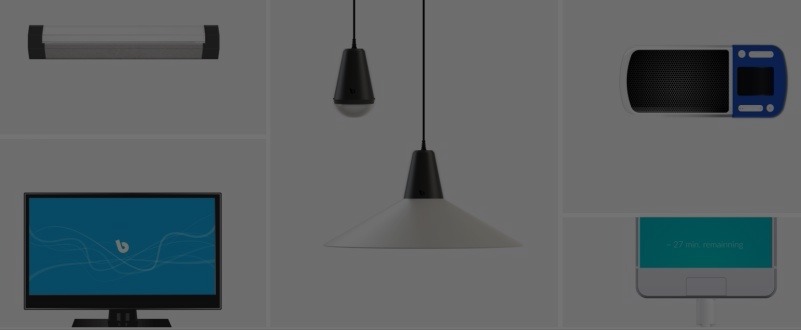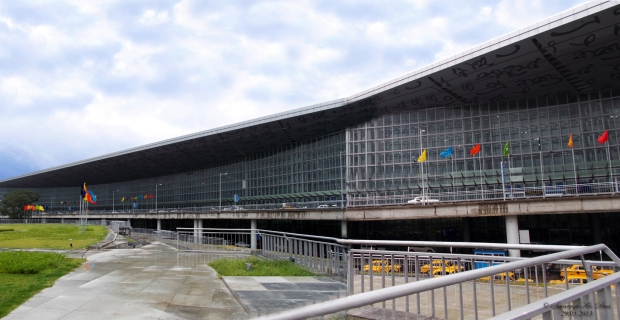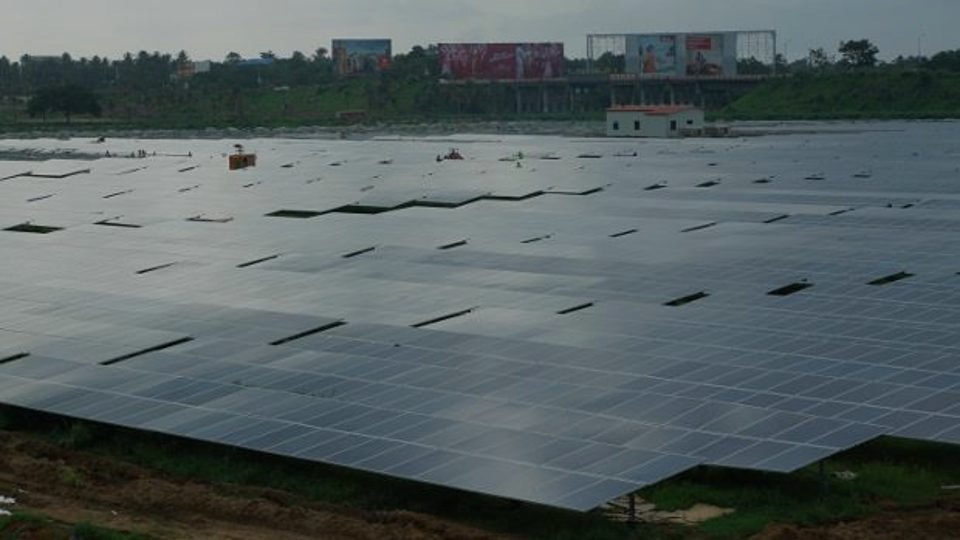India’s deadline for converting all vehicles into electric vehicles (EVs) in the next 13 years might sound too ambitious and even ridiculous to some, but transport minister Nitin Gadkari holds a different view. For him, 2030 is too late; he is confident of having EVs on Indian roads by 2022 “if all goes as per plan”. “I am optimistic about India’s transition to all-electric vehicles. It may take seven-eight years to achieve maximum electric mobility on Indian roads,” Gadkari tells this reporter. “Rather, just five years if everything rolls out as planned,” he adds. The country is soon going to roll out an electric vehicle policy to meet the government’s plan of having every vehicle on Indian roads powered by electricity. In May, the Niti Ayog recommended electrifying all new vehicles by offering fiscal incentives and by discouraging the registration of privately-owned petrol and diesel vehicles. The government has its reasons to push the sale of EVs. A signatory to the Paris climate accord, the country is obligated to bring down its share of global emissions by 2030. A significant way of achieving this is by curbing vehicular pollution by encouraging clean fuel options.
And it’s not just about pollution. The import bill for fuel is huge, the majority of which is used to run the automobile sector. As per the oil ministry, India, which imports 82% of its oil, is estimated to spend up to $85 billion in 2018 on oil imports. “The government is looking at ways in which we can bring down the fuel costs, as well as promote clean energy,” says Gadkari. Alok Tripathi, executive director, Petroleum Conservation Research Association (PCRA), adds, “Completely eliminating diesel- and petrol-driven vehicles and then bringing e-vehicles is going to be a major task. The deadline for electric vehicles is definitely ambitious, but not an impossible task, because there is a concept of technology disruption as well. We have seen new technology eliminate many things in just a few years,” he says, giving the example of mobile phones. “In 1999, very few people had mobiles. In 2017, everyone has one. And during this span, the utility of pagers and landline phones is over. So there could be a possibility that the e-vehicle technology becomes so cheap and affordable that it forces the consumer to go for it rather than diesel- and petrol-driven vehicle options. In that case, it’s right for us to adopt that technology.” He gives another example of solar energy, saying, “Three years ago, the rate for solar power was more than Rs 8-Rs 9 per unit. Now, it’s Rs 2.44. If the same happens in the case of e-vehicles as well, obviously the scenario will change.”
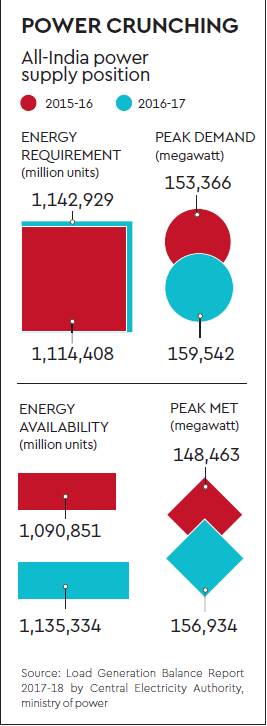
However, he believes that the phenomenon will be initially restricted to major cities only. “By 2030, EVs might become a competitive transportation mode in bigger cities such as Delhi, but diesel and petrol are going to run the main modes of transportation in other parts of the country… smaller cities,” he says. While on paper, the deadlines for EVs are in place, it’s a challenge that evokes questions from all quarters. Though auto companies may seem to be the ones that have the toughest challenge of changing their technology, an even more pertinent question is, where would the vehicles get electricity for charging, especially in a country where 100% electrification still remains a goal, and where massive load shedding is the order of the day? In such a case, the first question to ask is, are we power-sufficient enough to switch to EVs?
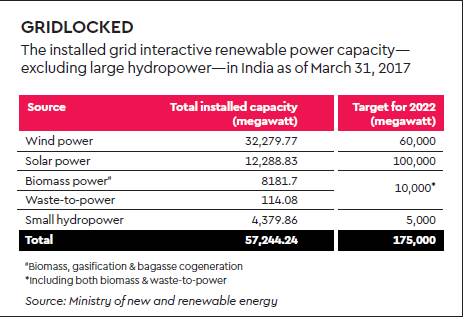
Power paradox
“There is no lack of power. EVs will come in big cities first and the charging will happen at petrol pumps. Currently, we aren’t generating sufficient power, as discoms are not able to sell it. But when EVs will increase in number, there will be demand for the surplus power that is currently lying idle,” says Gadkari. A mix of renewable and non-renewable forms of energy will fuel EVs, he adds. The power sector in India has shown significant improvement in the demand-supply scenario in the recent past largely due to private-sector investments. The generation capacity has grown at a much faster rate than the growth in demand. India’s demand for power is roughly around 175 GW, while the installed capacity is almost 330 GW, leading to a power-surplus situation. For a country synonymous with power shortage, this paradox can be explained with the fact that being power surplus technically refers to the recorded demand of consumers connected to the grid and the generating capacity of the grid. Surplus power occurs when power available with distribution companies at a given time exceeds the demand for electricity. A surplus could arise due to either shortage in electricity use or an increase in power supply, with the latter being the case in India. Data shows improvement in the situation, with generation capacity exceeding demand. However, demand of consumers not connected to the grid isn’t accounted for.“Yes, we are power surplus, but our state discoms are in a financial mess, especially in states like Uttar Pradesh and Bihar. The power ministry is working to bring in reforms, where we have less distribution and transmission losses,” says Gadkari.
However, any country that intends to run a large fleet of EVs will have to depend on electricity provided by a smart electricity grid, which can take the load of charging. Interestingly, over 240 million people of India’s 1.2-billion population still don’t have access to electricity. “If you have to kickstart electric mobility, the current regulation has to change. A forum of regulators has been asked to amend the law,” says Saurabh Kumar, managing director, Energy Efficiency Services Ltd (EESL), a joint venture of various public-sector companies under the power ministry. The Electricity Act, 2003, doesn’t allow electricity sale unless one obtains a discom licence to distribute power from the respective state electricity regulatory commission. For commercial charging stations to start, the Act has to be amended. The amendment might come out in the EV policy, which is currently with the Cabinet.
What the country is betting on to fuel EVs is renewable energy. So far, thermal power plants provide 60% of India’s 330-GW installed generating capacity. With the government planning to touch 175 GW of renewable energy by 2022, from the current 57 GW, it hopes to have 40% of the energy needs met by renewable energy, including nuclear and hydro. With renewable energy targets at 350 GW by 2030, the country’s total capacity will be pushed to 850 GW. More good news is that solar tariffs have also been tumbling fast, making it an attractive alternative. The government wants to grow solar capacity from 12 GW in May 2017 to 100 GW by 2022. “But renewable energy is inherently dynamic both by time of day (solar) and season (wind). Thus, some EVs can be powered directly by renewable energy, but not all. For instance, solar power’s maximum output is only in the middle of the day. The first set of vehicles to go electric (fleets/taxis/buses) might not be stationary at that time,” explains Rahul Tongia, fellow at Brookings India, a public policy research institute.
“However, capacity to generate by itself doesn’t translate into meaningful supply. For electrification to be possible and sustainable, the distribution company must be able to supply power that is reliable and affordable for newly-connected households,” explains Ashwini Chitnis, a researcher at Prayas, a non-profit advocacy group that focuses on energy. There are many obstacles in achieving this. First is the lack of infrastructure for making supply possible, but this has largely been taken care of by the central government through schemes such as Rajiv Gandhi Grameen Vidyutikaran Yojana and Deen Dayal Upadhyaya Gram Jyoti Yojana, which fund such infrastructure costs.“The second part, which is ensuring supply, is more difficult, as distribution companies suffer a loss of around `4-`5 per unit of power supplied to poor and newly-electrified households. This is because the cost of power purchase is high, whereas the tariffs of these consumers are low,” Chitnis explains.
As long as this disincentive for discoms, especially state discoms, isn’t addressed, capacity will not translate into meaningful electricity access. But the government’s ‘Power for All’ by 2019 is a goal that, analysts feel, isn’t tough to achieve as long as the issue of access to electricity is resolved. “The government has to undertake serious reforms to improve the working of discoms,” says Balawant Joshi, managing director of consulting firm Idam Infrastructure Advisory. In a power-surplus situation, load shedding has been prevalent to curb losses. Even when contracts are in place, power companies are reluctant to purchase power due to non-viable tariffs. “As per one study, the cost to serve many rural customers is more than `20 per unit, but discoms charge only Rs 2-Rs 4 per unit. They suffer huge losses as a result,” Joshi adds.
Challenges galore
As per the International Energy Agency (IEA), India would need to run more than 10 million electric cars in 2030, compared with the almost 1.3 million on the road worldwide in 2015. It’s a goal that equals 10% of the 2030 target for EVs on road globally, as agreed to in the Paris climate talks. With the power to be generated for charging of vehicles still under question, there are other concerns that players are worried about. Two of the major stumbling blocks to widespread EV adoption are the high capital expenditure required and the high cost of the current technology. “Both of these are surmountable problems, even in the short term. Open policies that support EVs and allow for the EV ecosystem to be built would be a great first step, as they would encourage the local government and incentivise the dedication of resources for building the required infrastructure,” says Rahul Mishra, CEO, Rays Future Energy India, a company providing solar generation infrastructure, including rooftop solutions, energy storage, e-vehicles and associated infrastructure and solar energy-based products.
“Different challenges arise for different categories of vehicles and cost is the primary factor,” says Sohinder Gill, CEO, Hero Eco, and director, corporate affairs, Society of Manufacturers of Electric Vehicles (SMEV). “Electric buses hardly exist in the world except in China and that, too, around two lakh only. The cost of an electric bus is huge. So how are we expecting to bring changes in public transport?” questions Gill. “How would buses ply inter-city? Will they stop for long hours for charging? It’s a huge task in Indian conditions to roll out fast-charging and lighter batteries for every category of vehicle in such a short span of time,” adds Gill.
Creating charging infrastructure is a contentious issue. Though the government is working on liberal rules for charging stations, rules as of now don’t allow automakers to set up charging stations, as only power distributors can offer electricity in the country. “Charging infrastructure would be one of the biggest bottlenecks for EV penetration in India. Several private players have expressed interest in setting up the charging infrastructure, and leading PSUs are also looking to set up charging stations. However, this will be a slow process and, hence, the 13-year deadline is a bit ambitious,” says Deepak Jain, partner, Bain & Company, a management consultancy firm.
The impact of charging during peak hours, which is likely to be early mornings or evenings, is also a cause for concern.“The worst-case scenario is if all vehicles simultaneously plug in at the grid’s peak. This is a key issue—even if the energy for EVs is there in power plants, is the instantaneous power capacity available?” asks Tongia of Brookings. “To address this problem, we must move towards some form of dynamic pricing, which both signifies grid conditions and the rise of solar power (which is inherently mid-day based),” adds Tongia, who was the founding technical adviser to the government’s Smart Grid Task Force. “Done right, EVs can be a boon for the grid, as they will use up the surplus capacity,” he adds.
Currently, the Indian auto ecosystem favours Internal Combustion Engine (ICE) vehicles. An EV has a significantly different cost structure, with almost 50-60% components linked to the battery power train, which makes the vehicle much more expensive than its ICE counterpart. Besides high cost and long charging time, there is also no clear-cut EV policy in place, so automakers are testing the waters before announcing any major plans.
Nissan, while hailing the government’s vision, expresses concern over charging infrastructure. “At Nissan India, we are assessing the environment and the viability of our electric vehicles in the Indian context. The aim is to evaluate and identify the appropriate EV models and to adapt them to the need of Indian customers. To be clear, we have not yet announced any plans to launch the Leaf in India,”says Bruno Grippay, vice-president, product planning, design and EV business, Nissan Motor India. The Nissan Leaf is a compact five-door hatchback electric car manufactured by Nissan that was introduced in Japan and the US in December 2010. The company this week said it has started testing its e-Power technology-equipped vehicle in India as part of its strategy to enhance electric mobility in Asia.

On road
While the wait for a clear EV policy continues, stakeholders have started rolling out their ventures.The government has already placed an order for 500 electric sedans from Tata Motors and 150 vehicles from Mahindra & Mahindra as part of its electric mobility drive. “The deadline for 500 electric cars is December 31 this year. Half of the cars should come by November,” says Kumar of EESL. Renault Motors India and Hyundai Motors India, too, are keen on applying for the government tender in the next lot. EESL has also invited tenders for charging infrastructure and, as per reports, the Indian arm of Swiss power equipment and robotics company ABB has bid for setting up 4,500 such stations. Maruti Suzuki chairman RC Bhargava on Friday said, “Maruti Suzuki will make electric cars. I can’t confirm the timelines, but we will get electric cars and will remain the leader on the electric front as well. We have to move to electric and we will move to electric. In the meanwhile, we would want the non-electric cars to be hybrid cars.”
Although Toyota so far has denied any plans to sell electric cars in India, early this month it announced a new electric car venture called ‘EV CA Spirit’ with Mazda and parts supplier Denso. Mahindra & Mahindra is working aggressively towards the EV mission. The company is in talks with the Karnataka government for investments in the state, as it looks at expanding capacity in its electric vehicles division, Mahindra Electric. JSW Energy, a division of OP Jindal Group, has signed a memorandum of understanding with the Gujarat government to set up India’s first manufacturing electric cars unit. The deal was signed to set up a Rs 4,000-crore unit. Recently, Tata Motors signed an agreement with Assam State Transport Corporation to run electric buses that can carry 26-34 passengers. They conducted a week-long trial run in Guwahati early this month. Chinese bus-making company BYD Auto Industry has bagged a contract to supply 25 fully-built electric buses to Himachal Road Transport Corporation, as well as six buses to state-owned transport service BEST in Mumbai. The buses, which cost around Rs 2 crore each, are 9-m long and can seat up to 25 passengers. Their lithium-ion phosphate-run batteries have a range of 144 miles (230 km) on a single charge and a top speed of nearly 90 km per hour, as per figures announced by the company.
Chetan Maini, a mechanical engineer-turned-businessman, who developed India’s first electric car Reva back in 1994 and later sold it to Mahindra & Mahindra in 2010, has now launched Sun Mobility, a company that will set up charging infrastructure for EVs across the country. Sun Mobility, in partnership with Ashok Leyland, is working on electric mobility solutions with plans to build a network of quick interchange battery stations predominantly powered by renewable energy. “While there are the challenges of high cost of the vehicle, long refuelling time and range anxiety in India, the innovative approach that the country seems to be taking by creating solutions around swapping and separating the battery from the vehicle can address these issues,” says Maini. Several start-ups have started operations around EVs. Ola has started running a portion of its fleet as electric cars in Nagpur. Lithium Urban Technologies, a Bengaluru-based start-up, offers an all-EV cab service to companies in NCR, Pune and Bengaluru. “It’s a good business model. It comes out 30-40% cheaper for companies that hire our cabs,” says Sanjay Krishnan, co-founder of Lithium, which has a fleet of 400 electric cars and has set up its own charging infrastructure. “Currently, there are no major issues in running an EV fleet except for the availability of a wider range of manufacturers,” he adds.
Solar power providers are also looking at tapping the market. “We do have solar-powered solutions that can be used to charge electric cars. Our current business model in the transportation sector is to focus on replacing existing diesel-based fleets with our electric vehicles, along with the required charging infrastructure,” says Mishra of Rays Future Energy India. For an effective EV system on a large scale, charging stations would have to be built in strategic locations in an area. This has already been done in several European cities. These charging stations could have proximate solar power-generating infrastructure. “How this works and how much this is responsible for the total power required at these stations depends upon the size of the station and the requirement of charging at each station,” Mishra adds.
Roadmap ahead
The brighter side of electric mobility is hailed by many. “Let’s talk about one step at a time. We are beginning with government vehicles right now and, for that, we don’t need any amendment in the law. The five lakh fleet owned by various government departments will be changed in the initial years before moving to mass-scale electric mobility,” says Kumar of EESL. The second lot of auction for EV tenders will happen in April next year and will be much more than the first lot of 10,000. “Currently, the operating cost of an EV may be around Rs 8-Rs 9 per km for an individual, but it will come down to Rs 1.5-Rs 2 per km in the coming years. So why wouldn’t a customer switch over?” asks Kumar. A point reiterated by Maini of Sun Mobility. “Globally, there is a transition that can be observed and you can see this trend in India as well. To enable people in the personal mobility segment to adopt EVs, the government could offer special privileges to EV-owners, like special access to free lanes, free parking, tolls and developing public charging and swapping infrastructure,” Maini suggests.
Experts argue that a lack of understanding of the long-term benefits of EVs, coupled with the psychological fear of running out of battery on congested roads with no charging point nearby, are some consumer concerns that need to be addressed. “An awareness campaign, similar to the way LED bulbs were promoted, needs to be undertaken,” says Gill of SMEV. The Rs 4.5-lakh crore automobile industry, with over 10,000 component manufacturers, is also looking at incentives and subsidies. “Unlike conventionally-powered vehicles, certain elements need to be in place for EVs to ensure viability and customer take-up, such as charging network, education programme and necessary incentives. To stimulate purchases by consumers, the government can provide incentives to accelerate the adoption of EVs,” says Grippay of Nissan.
Customer concerns aren’t unfounded. Currently, EVs in India average about 120 km on full charge, making them unsuitable for long drives. Then there is the lack of speed; the current models average 85 km per hour at top speed. “The government should provide strong incentives on upfront EV purchases, like what China and many other countries have done. They should provide incentives for R&D related to EVs, so that original equipment manufacturers can come up with better products suited to Indian requirements,” says Jain of Bain & Co.Time is running out and automakers are awaiting the new policy with bated breath. “Even if we achieve 40% EV adoption by 2030, we should be happy. But for that, the government has to call all the stakeholders for discussion, so that streamlined measures are out soon,” says Gill of SMEV.
Source: http://www.financialexpress.com/india-news/will-india-be-able-to-reach-deadline-to-convert-all-vehicles-into-evs-by-2030-here-are-the-challenges/910522/
